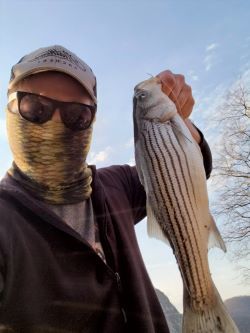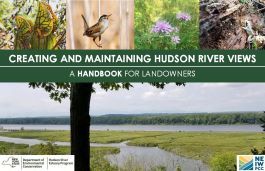Join Hudson River Cooperative Anglers; Invasive Species Management Meeting; Bald Eagles
The New York State Department of Environmental Conservation sent this bulletin on 03/31/2021 04:54 PM EDT |
| DEC Delivers - Information to keep you connected and informed from the NYS Department of Environmental Conservation |
| Share or view as a web page || Update preferences or unsubscribe |
Hudson RiverNet
|
In This Issue:
Hudson River Striped Bass Anglers: DEC Seeks Volunteers
Here's how it works: Fill out a logbook we provide or record your trips on your smartphone using DEC's Hudson River online logbook (PDF) whenever you fish on the tidal Hudson River (by boat or on the shore). Record general location, time, gear used, what you caught (or if you didn't catch anything), and return the logbook when you are done fishing. You'll receive an annual newsletter summarizing the recreational fishery information, in addition to the latest news regarding Hudson River regulations and the river. In the tidal Hudson River north of the George Washington Bridge, the recreational slot limit is 18” - 28” (not less than 18” nor greater than 28”) and the season is open April 1 – November 30. Visit Tidal Hudson River Regulations for more information. Join today! For more information on the angler program and instructions on installing the Survey123 App to access the online logbook, visit Hudson River Cooperative Angler or email hudsonangler@dec.ny.gov. Note: If you primarily fish for striped bass in New York’s marine waters south of the George Washington Bridge, please contact the Diadromous Fish Unit at sbcaprogram@dec.ny.gov or visit DEC’s Striped Bass Cooperative Anglers website. In marine waters, the recreational slot limit is 28” - 35” (not less than 28” nor greater than 35”) and the season is open April 15 – December 15. Visit Recreational Saltwater Fishing Regulations for more information. 2021 Striped Bass Recreational Regulation ChangesOn January 6, 2021, DEC released a proposed regulation for public review and comment that would require the use of circle hooks when recreational fishing for Atlantic striped bass. This proposed regulation would reduce release mortality in recreational striped bass fisheries as required by ASMFC Addendum VI to Amendment 6 to address the finding that the striped bass resource is overfished and experiencing overfishing. The full text of the proposed regulation can be found on DEC's website. Final regulations for the tidal Hudson and ocean fisheries are expected to be effective soon. Capital Region PRSIM Meeting April 13
Bald Eagles Nesting Along the Hudson River
|

 Do you fish for striped bass in the Hudson River? Whether you catch-and-release or take home a keeper, you can be part of the
Do you fish for striped bass in the Hudson River? Whether you catch-and-release or take home a keeper, you can be part of the  Join the spring meeting of the
Join the spring meeting of the  Perhaps the most significant aspect of spring is the creation of new wildlife--birds chief among them. The easiest to notice may be the Bald Eagle, with their huge nests and tiny fuzzy-headed nestlings. Close observation will note daily deliveries of fish from the river, many of them fresh from the sea. Bald eagles mate for life, returning to nest in the general area (within 250 miles) from which they fledged. Once a pair selects a nesting territory, they use it for the rest of their lives. This is the 21st nestling in 23 years for this resilient female bald eagle. Learn more about New York's bald eagles on
Perhaps the most significant aspect of spring is the creation of new wildlife--birds chief among them. The easiest to notice may be the Bald Eagle, with their huge nests and tiny fuzzy-headed nestlings. Close observation will note daily deliveries of fish from the river, many of them fresh from the sea. Bald eagles mate for life, returning to nest in the general area (within 250 miles) from which they fledged. Once a pair selects a nesting territory, they use it for the rest of their lives. This is the 21st nestling in 23 years for this resilient female bald eagle. Learn more about New York's bald eagles on